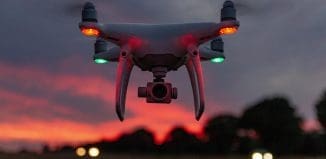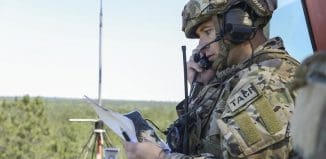Military Big Data Innovation Inspires Commercial Sector
This post is also available in:  עברית (Hebrew)
עברית (Hebrew)
Innovations and developments found in aerospace and defense often trickle down to the commercial market as products and new capabilities for big data and IoT. Several examples reflect new technology developments coming out of NASA and the US Department of Defense (DoD) that you should keep an eye on in 2019, according to techrepublic.com.
Data payloads cleaning – IoT radically changes the way that IT laboriously cleans big data. Drones in military operations are programmed with machine and deep learning algorithms that enable it to determine which pieces of data are critical to a mission, and which are not. During the in-flight, real-time data collection process, these drones assess all incoming data and automatically discard irrelevant data, dramatically shrinking data payloads.
Hardened sensors – NASA wants hardened sensors that can withstand extreme heat, cold, high radiation levels, and other harsh environmental conditions found in space. These new hardened sensors are more reliable than what companies presently use in their IoT and will go far in preventing IoT sensor failures in space and elsewhere.
Machine learning and artificial intelligence – In military operations, commercial sector contractors and DoD are working on self-healing formations of drones, where each drone executes its own machine learning and artificial intelligence as it flies a mission. Using this machine learning and AI, a drone fleet on a mission can detect when a member has failed, and then communicate with other drones to regroup and continue the mission without interruption. The technology can be used on manufacturing assembly lines, with machines interoperating and communicating together.
Manned-unmanned teaming – In military operations, a technology that symbiotically teams humans and drones on missions is designed so an unmanned vehicle can fly as a teammate with a manned aircraft. This man-machine symbiosis can work just as well for a logistics provider with a 1,000 vehicle fleet.
Solar power – In NASA’s Lunar Lander project the energy source of choice is solar, which is limitless in space and does not require transport. NASA plans to take advantage of the limitless space solar supply by applying logistics to its vehicle lunar orbits. The plan includes keeping an orbiting craft away from the dark side of the moon, so that the craft can continuously replenish its fuel supplies because it is always exposed to the sun’s solar energy.
Legacy systems – In space and defense and in the private sector, there is a desire to keep legacy systems in place that continue to perform well. Accordingly, vendors working on military projects are asked to develop technologies that are backwardly compatible with existing technology bases. This is exactly what enterprise IT wants.






























